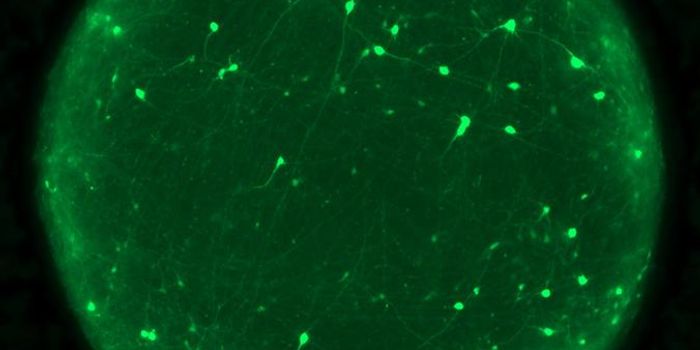As the brain develops, neurons are created from a special type of neural stem call called radial glia. Researchers at Duke University used microscopy to observe molecules being transported the length of those radial glial cells. The investigators have also suggested that a protein related to Fragile X syndrome has a role in the molecular transport seen in the stem cells. Their
findings were reported in the journal Current Biology.
"The moving molecules we saw in these stem cells could be crucial for their function -- including their decision to become neurons," said the senior investigator of the report, Debra Silver, an Assistant Professor of Molecular Genetics and Microbiology at the Duke University School of Medicine. "We're excited about these new discoveries and have many more questions."
The radial glia are long, extending through layers of the brain. One end of the cells goes all the way to the uppermost parts of the brain. There at the terminus of the cell, endfeet prevent neurons, which traverse these extensions, from making any additional migration. Because of the lengths of the cells, and the very different surroundings that the cell penetrates along its body, the researchers surmised that some important molecules in the cell such as messenger RNA (mRNA) might need to be transported to different areas and in some cases that would mean going a long way.
After working to find the right conditions at the microscope, postdoctoral researcher Louis-Jan Pilaz was finally able to observe the movement of mRNA along the body of the neural stem cell. "The [fluorescently tagged mRNAs] were stopping sometimes, and then they would keep going, like they have an intention," explained Pilaz. "No one had seen molecules moving at this speed within neural stem cells before."
Silver commented that their results suggest that neural stem cells function as highways for molecular transport, and move not only mRNAs but many other types of molecules as well.
The mRNA moves through the cell and when it reaches the endfeet, the machinery of the cell translates it into protein. A special technique developed by the research team enabled them to see proteins being made there after they isolated the endfeet from the remainder of the cell. "[Until now], there have been really limited tools for being able to evaluate this in an intact tissue, and that's where our study provides a new model," Silver said.
The molecules that are transported do not simply migrate by diffusion, so the investigators delved deeper to learn more about what proteins might be involved in this process. By investigating molecules that are known to be involved in RNA dynamics, they found that a protein called FMRP was responsible for binding and transporting the mRNAs. That protein has been linked to Fragile X syndrome, which is “a genetic condition that causes intellectual disability, behavioral and learning challenges and various physical characteristics, according to the
National Fragile X Foundation.
FMRP has also been found to play a role in neural stem cell function, but not much is known about its relationship to brain development. Because it looks like it moves mRNAs that help build neurons as the brain develops, this could be a big clue to how the disorder works.
The scientists found 115 mRNAs that FMRP binds; 30 percent of them have been linked to diseases of the brain, and about half correlate to autism. Selecting one mRNA, the researchers demonstrated that the mRNA required FMRP to migrate to the endfeet in a mouse model of Fragile X.
"This was really exciting. We clearly saw enrichment of a subset of RNAs, that we were able to go on and validate using other methods," Silver said.
Additional studies are being conducted to understand more about the mechanisms of protein production in the endfeet, and how it might be altered as development progresses. The scientists are also interested in learning more about the role of FMRP in brain development.
If you would like to know more about Fragile X, watch the following video.
Sources:
AAAS/Eurekalert! via
Duke University,
Current Biology


















































